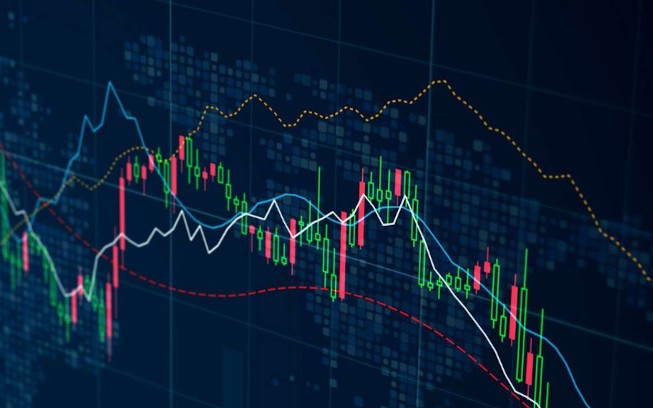
The Ultimate Guide to Forex Trading Systems
In the intricate world of currency trading, a well-designed forex trading system Trading Broker Global can mean the difference between profit and loss. Understanding Forex trading systems is essential for anyone looking to dive into this exciting yet volatile market. In this guide, we will explore what Forex trading systems are, how they work, and provide insights into developing your own successful system.
What is a Forex Trading System?
A Forex trading system is a set of rules and guidelines that traders use to make decisions regarding buying and selling currencies. The effectiveness of these systems can vary significantly based on the strategies applied and the individual trader's discipline. A trading system typically includes entry and exit points, trade management techniques, and risk management practices.
Types of Forex Trading Systems
Forex trading systems can generally be categorized into several types:
- Technical Analysis Systems: These systems rely on charts, trends, and indicators to make trading decisions. Common tools include moving averages, relative strength index (RSI), and Fibonacci retracement levels.
- Fundamental Analysis Systems: Fundamental traders focus on economic indicators, news releases, and geopolitical events to predict currency movement. Understanding interest rates, inflation, and economic growth is crucial in this approach.
- Algorithmic Trading Systems: These involve the use of computer algorithms to automate trades based on predetermined market conditions. They are designed to react quickly to market changes, often in milliseconds, providing a trading edge.
- Scalping Systems: Scalpers aim for small, quick profits by executing numerous trades throughout the day. This requires a precise, disciplined approach and a solid understanding of market timing.
- Swing Trading Systems: This approach focuses on capturing price swings over days or weeks. Swing traders typically use a combination of technical and fundamental analysis to identify high-probability trades.
Key Components of a Successful Forex Trading System
To develop a robust Forex trading system, traders should consider the following components:

- Trading Strategy: Define a clear strategy based on your preferred analysis technique, whether it's technical, fundamental, or algorithmic.
- Risk Management: This is crucial in Forex trading, where leverage can amplify both gains and losses. Traders should establish position sizes, stop-loss levels, and risk-reward ratios.
- Performance Measurement: Track performance metrics such as win rate, return on investment (ROI), and maximum drawdown. Analyse this data after every trading session to refine your strategy.
- Emotional Discipline: Successful trading requires discipline and a well-defined set of rules to avoid impulsive decisions. Emotional control is key to sticking to your trading plan.
Creating Your Own Forex Trading System
Creating a Forex trading system requires careful planning and testing. Here are the steps to develop an effective system:
- Define Your Goals: Determine your trading objectives, including target profit, risk tolerance, and trading frequency.
- Select Your Market: Focus on specific currency pairs. Each pair has different characteristics and behavior; familiarity can lead to more informed decisions.
- Choose Your Strategy: Decide if your approach will be primarily technical, fundamental, or a combination of both.
- Backtest Your System: Use historical data to test the effectiveness of your system. This will help identify any flaws and allow you to make necessary adjustments.
- Paper Trade: Before committing real capital, practice your system through paper trading. This allows you to build confidence without financial risk.
- Implement and Monitor: Once you're comfortable, start trading with real funds. Review your performance regularly and make adjustments as needed.
Common Mistakes to Avoid
Even with a solid Forex trading system, traders often make common mistakes. Here are some pitfalls to watch out for:
- Overleveraging: Using too much leverage can lead to significant losses. Always be cautious and use leverage conservatively.
- Ignoring Risk Management: Failing to implement proper risk management can result in catastrophic losses. Always use stop-loss orders and never risk more than you can afford to lose.
- Chasing Losses: After a series of losses, some traders might increase their position size in an attempt to recover losses quickly. This often leads to even larger losses.
- Lack of a Trading Plan: Trading without a well-defined plan can lead to emotional decisions and inconsistencies. Stick to your established trading plan.
- Neglecting Analysis: Traders must stay informed about market trends and economic conditions. Neglecting to analyze the market can lead to misguided trades.
The Future of Forex Trading Systems
The Forex market is constantly evolving due to technological advancements, regulatory changes, and emerging market trends. As artificial intelligence and machine learning continue to gain traction, future trading systems are likely to be even more sophisticated. Traders who embrace these technological innovations can gain a competitive edge.
Conclusion
Understanding Forex trading systems is vital for anyone looking to succeed in the foreign exchange market. By developing a well-structured trading plan, practicing diligence, and consistently refining your approach, you can enhance your chances of trading success. Remember to leverage resources effectively, stay informed about market dynamics, and continuously adapt your strategies to keep pace with the ever-changing landscape of Forex trading.